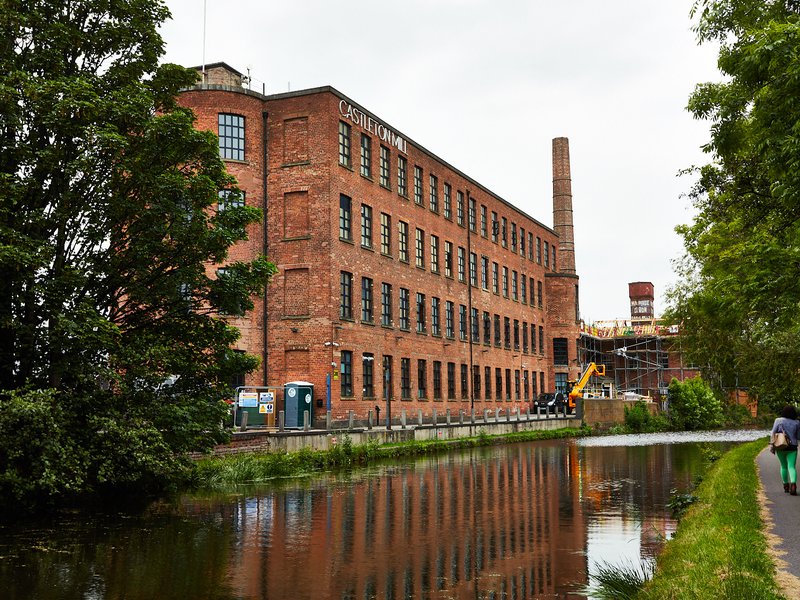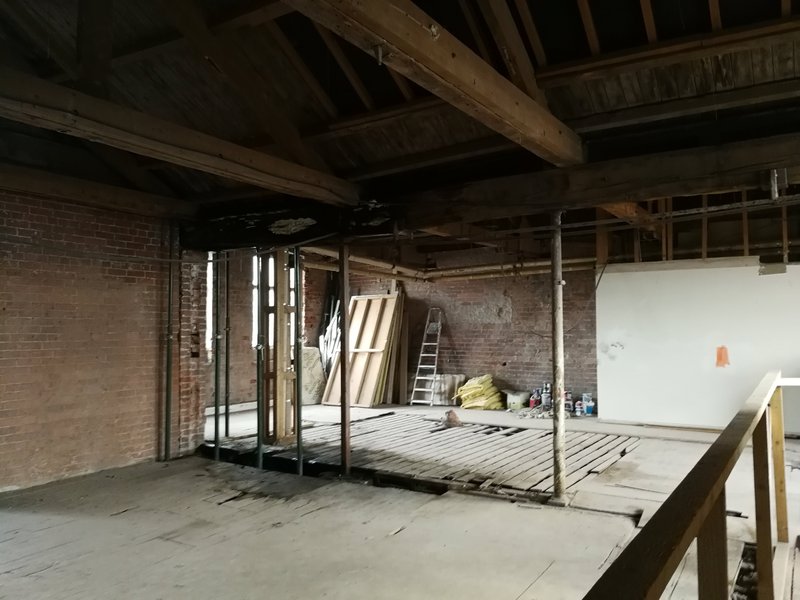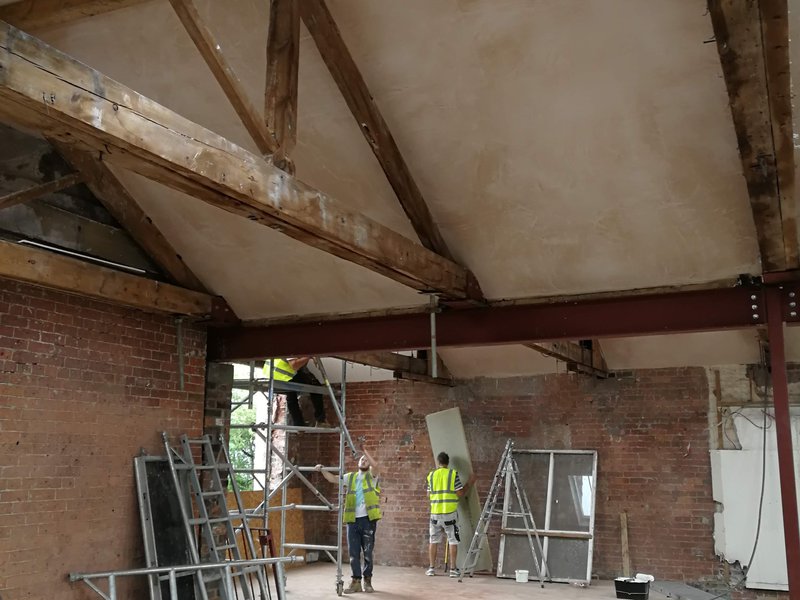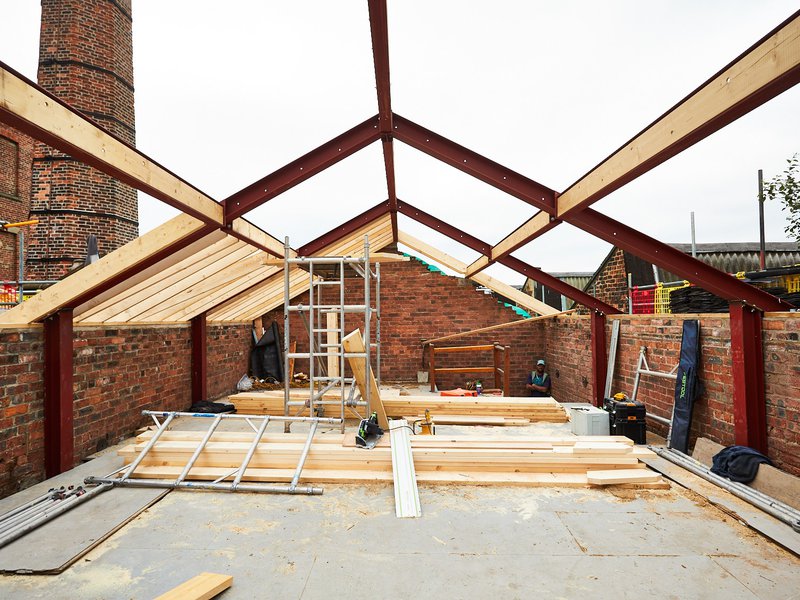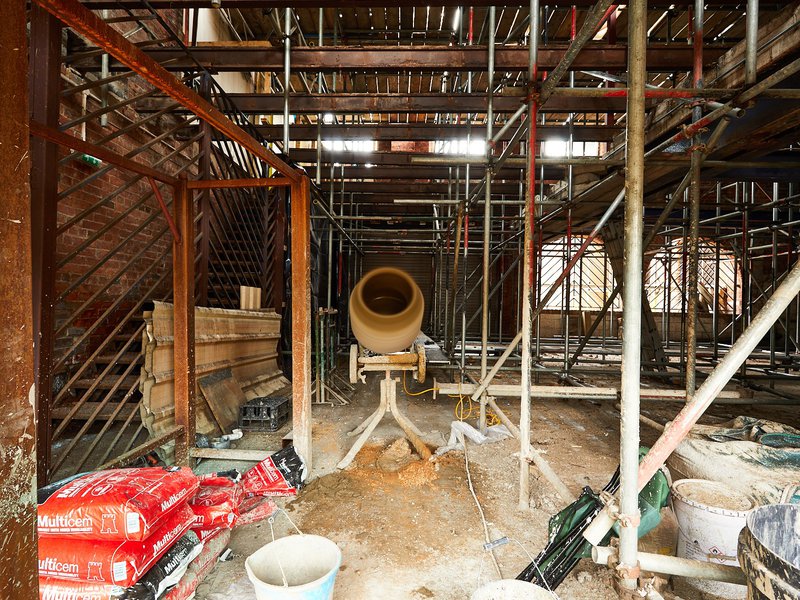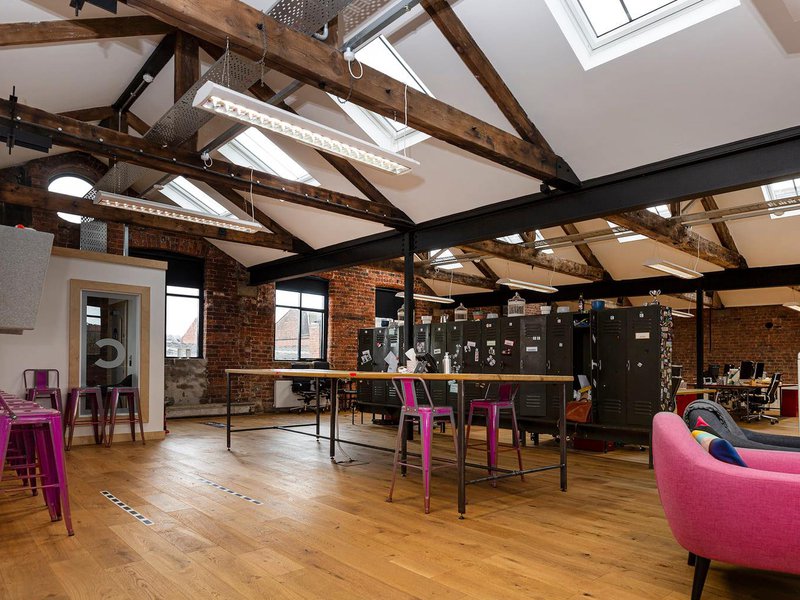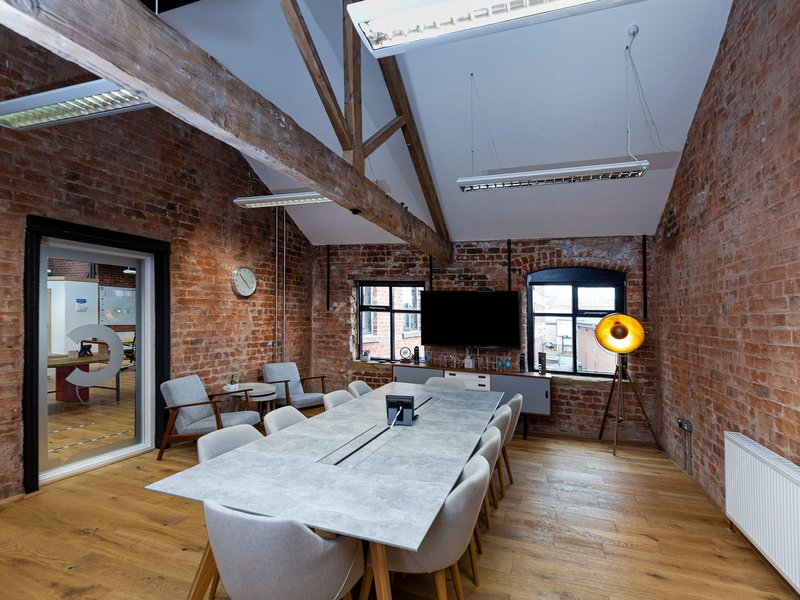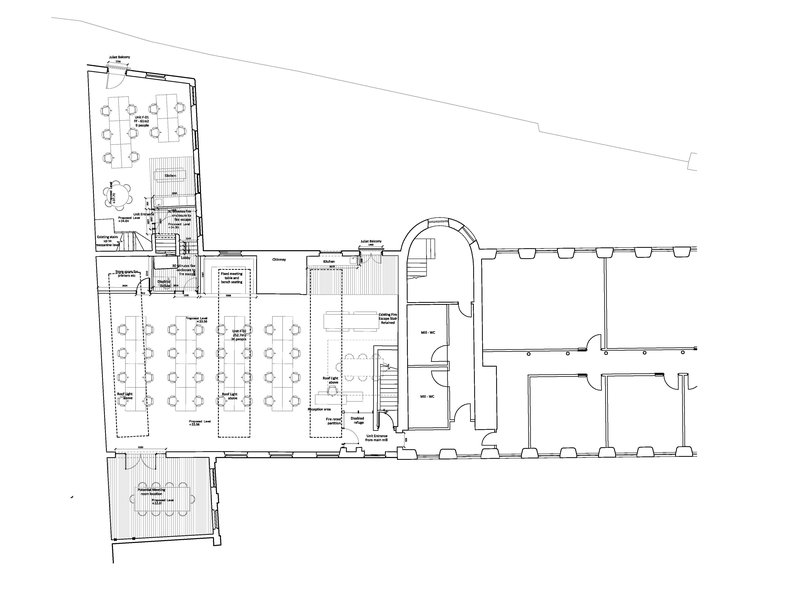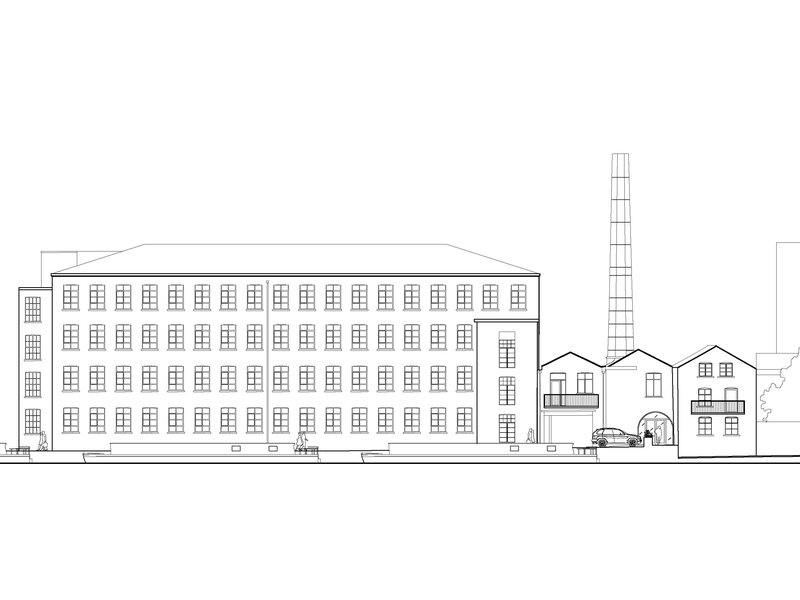Built in 1836, Castleton Mill was designed for steam powered flax spinning, in the 1850s a weaving shed was added for wool and linen manufacture. It is one of three remaining mills of its type in the UK.
The weaving shed and chimney were severely damage. Roof failures resulting in water penetration and rotting to structural timbers. Plant growth, cracking external walls and insubstantial foundations resulting in structural movement. Mortar deterioration and lack of maintenance in the chimney required serious consideration.
Group Ginger were appointed to conserve and reappropriate the grade II listed industrial buildings. Building condition reports and investigations determined the extent of repair and the nature of the specialist skills required. Liaison with a specialist steeplejack established the chimney preservation strategy which resulted in height reduction to offer greater structural stability.
Throughout the renovation of the mill, the key aim has been to restore and enhance the original features, as well as promote the cultural significance of the building – both past and present. Local specialist contractors have been used to complete the works. Consultation with Conservation officers has been consistent throughout the process from initial feasibility, statutory consent procedure, on site and through to completion.
The Grade II listed original flax mill has been successfully repurposed as a collection of creative work spaces and studios that are high quality and affordable; attracting creative businesses drawn to the high-spec facilities, inspiring setting, shared space and the focus on its creative community.
